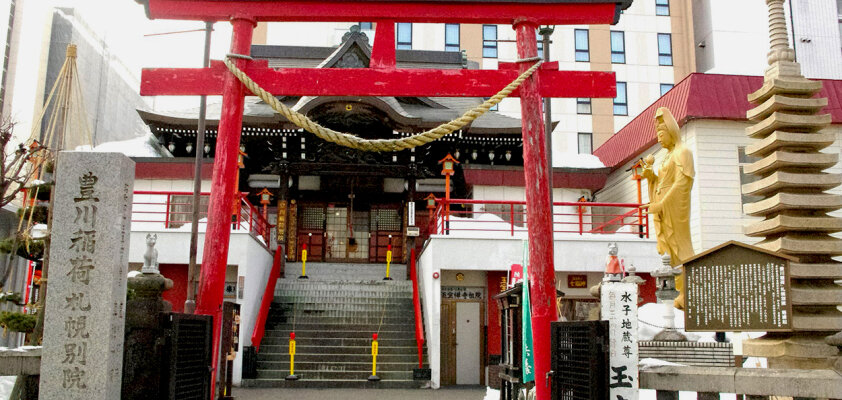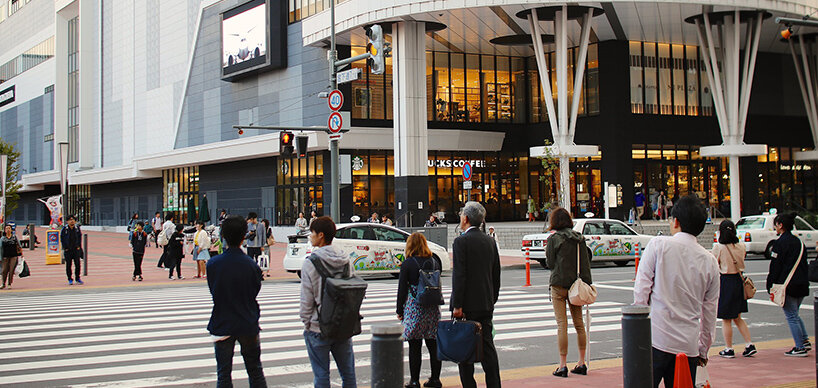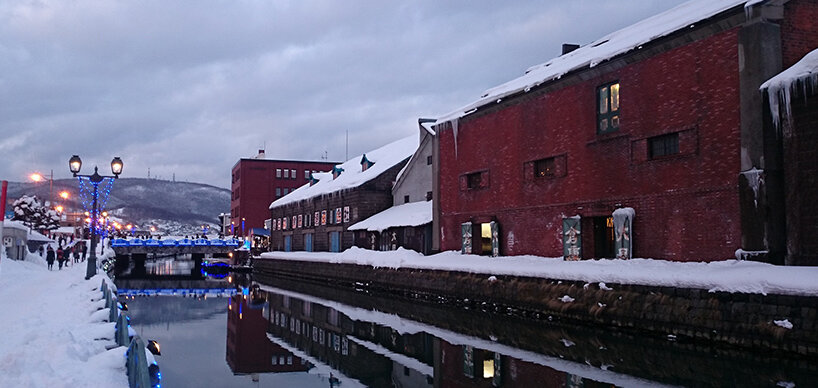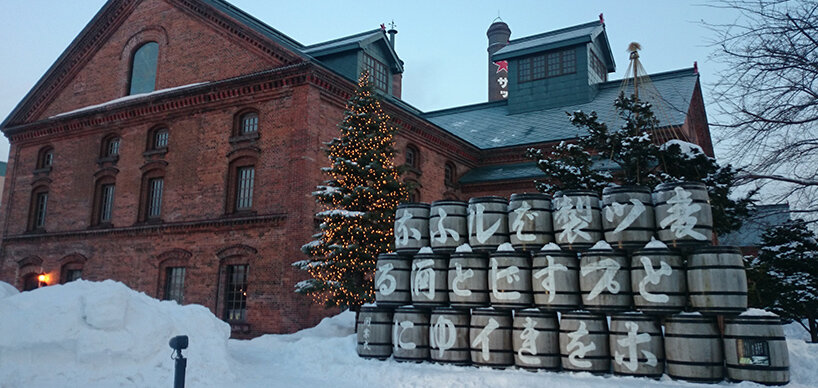Hokkaido, Island Between Craft and Art

The name Hokkaido, or Uchiki Kuri as it is called in Japan, initially brings to mind the pumpkin in this country. This large, orange vegetable that, in winter months, goes into our hungry stomachs hot from the oven along with potatoes, beets, carrots, bell peppers, and leeks. Served as pumpkin risotto, garnished with fresh herbs, or nourishing us as a warm pumpkin soup. It is particularly popular in vegetarian cuisine because Hokkaido pumpkin is not only delicious but also healthy and low-carb. It often appears on the table with fresh crisp salad. Rich in taste, a little olive oil and salt are enough to unfold its full flavor. Pure and unmistakable, you would like to eat it all year round, wrapped in the best recipes, but the pumpkin is a fall and winter vegetable that only adorns the plates with its radiant color towards the end of August.
Its preparation is diverse, although it is not easy to peel despite its thin skin, but much easier to hollow out. You can bake it, cook it, probably even grill it. However, you choose to approach it, compared to other types of pumpkins, it is an all-rounder.
The Hokkaido pumpkin is also familiar to us through the American tradition of Halloween. Carved out of its flesh, illuminated with light, and looking eerie, it creates an atmospheric flair with its grimaces. When the first frost lies on its face, it provides a pure goosebump-inducing feeling. Much less spooky is its colleague, the Butternut squash. It is safe to say that the Hokkaido pumpkin is truly unique in its kind.
Naming
The distinctive vegetable, also very popular in Japanese cuisine, gets its name from the eponymous Hokkaido Island. But let's start from the beginning. The main island of Japan was formerly called Ezo, which translates to 'The place where another people live.' The different people at that time were the Ainu, the indigenous population of Ezo. Against the backdrop of the Meiji era, Matsuura Takeshirō (1818 – 1888), sent by the government, sought a new name for the northern island over 202 years ago. Inspired by the foreign culture, he initially thought of Kitakaido ('The north where the Ainu live'). However, kai means not only Ainu but also the sea, hoku is synonymous with kita, both meaning north. Thus, Ezo ultimately became Hokkaido, the second-largest of a total of four main islands in the Sea of Japan and simultaneously the largest prefecture in Japan.
Immerse yourself in nature, culture and traditions
Takeshirō, who traveled the land from an early age, was shaped by its rich cultural diversity. Being cosmopolitan, he advocated against discrimination and violence even in those times. For him, 'being different' was a valuable asset that needed protection because it brought with it foreign knowledge. The Ainu culture has always possessed valuable knowledge of the art of craftsmanship. A place that remains important for this cultural heritage today is the highest mountain in Hokkaido, Daisetsuzan, with an elevation of 2,000 meters. The volcanic mountain, located in the eponymous national park today, was something like the 'playground of the gods' for the Ainu. They revered the mountain, known as Kamui Mintara. Even today, you can feel a certain magic in its nebulous expanse that surrounds it in winter. In it, the human eye can get lost, while the mind can find itself through attentive listening. Many heed this call and enjoy extensive snowshoeing and winter sports, spending their nights in one of the traditional Japanese inns known as Ryokan in Japan. To shake off the cold of the day, many winter enthusiasts often indulge in the traditional Onsen, bathing in hot springs.
For those who want to explore the surroundings in addition to winter fun or take a break between popular trekking tours in summer and autumn, the origin of the local craftsmanship can still be experienced today. For example, at the Yukara-ori Folk Art Museum.

Picture Credits: Author: MIKI Yoshihito | Flickr | License
Craftsmanship between yesterday and today
Hokkaido is nearly twice the size of Switzerland and is home to approximately 5.5 million people today, still a sparsely populated region that saw Japanese settlement beginning in 1868. Indigenous culture in Hokkaido was gradually displaced through settler colonialism, and only a few natives have preserved their origins and traditions. Through individual practices and public initiatives, efforts are made to address this and pass on valuable knowledge, such as through the construction of museums like the Kawamura Kaneto Ainu Memorial Museum in Asahikawa. Here, in the second-largest city on the island, treasures of the past rest: textile weaving patterns, traditional garments, model architecture, and intricate wood carvings. However, Asahikawa holds cultural uniqueness beyond the boundaries of museums.
Building on this, the city in Japan has evolved into one of the top three design hubs for interior design. The Asahikawa Design Center represents exquisite brands from established studios and artisans whose primary material is wood. To sustainably protect this valuable resource for Japan, industrial efforts focus on preserving and expanding the forest ecosystem that flourishes on the lush northern island.
Yet, the northern island offers a wealth of opportunities to work with nature, such as its soil used for ceramic production. In Koshimizu, for example, the Hokujigama awaits all interested parties, a ceramic studio practicing and teaching the ancient art of pottery. With loving patience, clay is transformed here into plates, cups, and (tea) bowls. The raw material is gently stroked up and down on the potter's wheel up to 100 times, removing even the last air bubbles formed in conjunction with water.

In the picturesque Otaru, on the other hand, a small canal town on the coast, Japanese masters and young designers handcraft blown glass and music boxes, passing on their knowledge to interested creatives. The local art scene animates the leading trade, financial, and business center that Japan's city has developed into with a floating lightness. A similar craftsmanship is found in Hakodate, in the far south of the island. Surrounded by water and lush greenery, you encounter a Western-influenced, charming cityscape. In addition to red brick houses and wooden churches that came to Japan through earlier trade relations with Europe and the USA, comprehensive knowledge of glass blowing is also found here. Everywhere, you find the delicate and colorful products that significantly contribute to the charm of the port city. Besides glass art, the fishing industry also captivates with fresh seafood, making Japan's sushi art a true palate experience. Taste Hakodate, experience it with all your senses, and briefly forget the everyday.
Culture in the course of time
Located in the far north and founded in 1866, the colonial-influenced capital Sapporo is situated. The Sapporo Snow Festival is the largest festival in Hokkaido, and yet it's just one of many. Located in Odori Park, it welcomes up to 2 million visitors annually. Here, too, the focus is on the cold season, captivating with snow sculptures, snowball fights, and ice skating. The Sapporo Snow Festival annually recalls the 1972 Winter Olympics held in Hokkaido.

In addition, Sapporo is home to the art of brewing beer, although today beer is brewed in many places in Japan. German craftsmanship that made its way from Berlin to Tokyo and from there to the largest city on the northern island. Due to its climatic conditions and the favorable location for barley and hop cultivation, this region was ideal for the art of beer brewing. Thanks to this circumstance, the beer festivals on the island bring the balance between winter and summer love back to Hokkaido.
The cool northern island is worth a visit today for many reasons. It is a real eye-catcher, especially for those who appreciate landscapes and silence. Many consider the diverse scenic highlights of the region – the coasts, fields, and forested areas, as well as mountain ranges and waterfalls – to be particularly special. Between the originality of the former Ainu region and modern (agricultural) activity, the first steps of former pioneers are evident. For example, in Kaitaku no Mura, the historical village of Hokkaido, in the middle of the natural park of the Napporo Shinrin Koen region. The open-air museum showcases past architecture, fishing, and agriculture within the Meiji, Taisho, and early Showa dynasties.
Although the original culture and its customs largely faded with Japan's annexation of Hokkaido, they have not been completely eradicated. Instead, they have found their way into the modern world, shaping it from the highest island in Japan. A journey to Hokkaido means not only traveling to another land but also jumping between times. It involves experiencing Japan as it was then and how it has developed today. What all cultures of this magical place have in common is the still creative power of one's own hands. In modern Japan, but also through changing values of a global world, this is gaining new appreciation today.











-from-the-yakiyaki-grill-pan.jpg)




